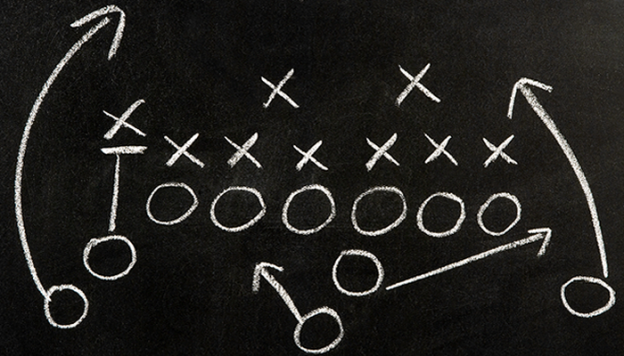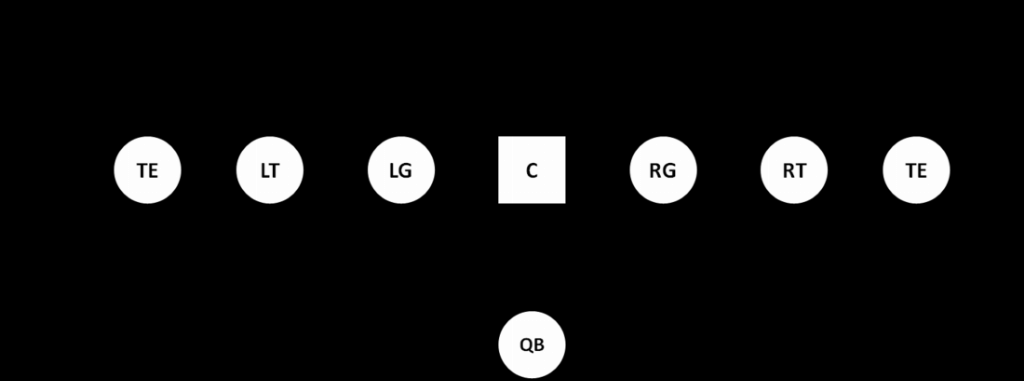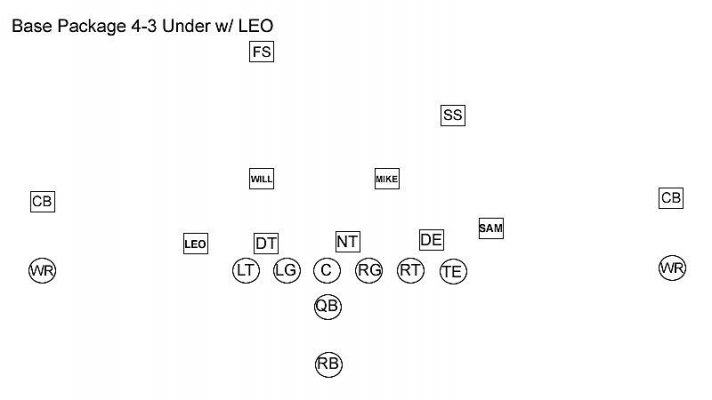original poster
New member
- Joined
- Nov 24, 2014
- Messages
- 3,201
- Reaction score
- 1

My next Football 101 is going to explain how the defensive front 7 work together on the field. The front 7 refers to the defensive line group and the linebacker group. Every football team going assumes a base formation of 4-3 (4 DL 3 LB) or 3-4 (3 DL 4 LB), this obviously changes when you get into nickel formations but for the purpose of this article I am going to focus on base formations.
Firstly, let's look at the defensive line and what their responsibilities are. It is worth noting that I am not particularly familiar with the intricacies of a 3-4 formation so will be focussing on a 4-3 for this article.
The first thing we need to go over is to understand the responsibilities is gaps and techniques. I'm sure at some point you've heard the term '5 tech' or 'b gap', lets explain exactly what these are in simple terms.

Looking at the above picture, you can see the offensive line as well as a tight end lined up either side of the tackle, this is often called 'max protect' as there are 7 players blocking to protect the QB as opposed to the standard 5.
Let's look at techniques first followed by gaps
A defensive lineman's technique is quite simple, it's where he is lined up in relation to the offensive line. If the 'technique' is an even number (0 tech, 2 tech, 4 tech, 6 tech) it means he is lining up dead on center with an offensive lineman, helmet to helmet.
0 technique - directly in front of the offensive center
2 technique - directly in front of the guard
4 technique - directly in front of the tackle
6 technique - directly in front of the tight end
When the number are odd (1 tech, 3 tech, 5 tech, 7 tech) it means the defensive player is lining up off the shoulder of the offensive player. Typically the defenders helmet will be directly in front of the offensive players shoulder, so roughly 50% of the two bodies are in front of each other. In simple terms -
1 technique - off the shoulder of the offensive center
3 technique - off the shoulder of the guard
5 technique - off the shoulder of the tackle
7 technique - off the shoulder of the tight end
Make sense? If it doesn't re-read it back a couple of times and you should get it. Even = lining up head on, odd = lining up offset.
Now onto gaps. Gaps are pretty self-explanatory, they are the gaps in between the players, it's as simple as that. In Pete Carroll's system, each player is responsible for a gap, but let's go into more detail.
A gap - the space between the offensive center and guard
B gap - the space between the guard and tackle
C gap - the space between the tackle and tight end
D gap - the space to the outside of the tight end
Each defensive player is assigned a gap, lets focus on the defensive line for now and I will explain gap control for linebackers later in the article.
Explaining the 'under' part
In a 4-3 under (under denotes that the players line up on the shoulder furthest away from the tight end, in a 4-3 over, the players line up on the shoulder closest to the tight end). In Pete Carroll's defense, the under also changes the responsibility of the SAM linebacker, but more on that later.
If, for example, you're a defender facing the offense and they're lined up as follows -
TE - RT - RG - C - LG - LT
You would line up to the right hand side of the offensive player.

Looking at the above image -
The DE is in the 5 technique covering the strongside C gap
The NT is in the 1 technique covering the strongside A gap
The DT is in the 3 technique covering the weakside B gap
The LEO is in the 5 technique covering the weakside C gap
(strongside means on the side of the right end, in this case, the right)
Note - in this situation the weakside A gap (to the left of the C) would be the responsibility of the WILL linebacker and the strongside B gap (to the right of the RG) would be the responsibility of the MIKE linebacker). That covers every gap the running back could rush through and in a blitz situation, every gap is going to see traffic.
Going into detail about each position
The LEO spot tends to be manned by a conventionally smaller defensive end. Their primary responsibilities are to rush the passer and control the C gap, in some cases they are also dropped back into coverage, but you'll predominantly see them stay at the line of scrimmage and try and get to the QB.
The strongside defensive tackle is the ultimate run stuffer, they're typically the strongest and heaviest on the line and their main focus is to stop the run. Of course they try and rush the passer, too, but their role and body size is more geared towards the run.
The weakside defensive tackle is ideally a 'premiere' tackle that can rush the passer, he will be explosive and have great 'get off'. Pete Carroll has longed for someone to man this role for many years. Sheldon Richardson was this guy, Malik McDowell is hoped to be this guy moving forwards.
The weakside defensive end has similar duties, stop the run and rush the passer. You can have a variety of different body types here but ideally you want a bigger guy with power to get round the edge and sack the QB, or at least force the QB to step up into the pocket, hopefully into the arms of one of the defensive tackles.
Notes on the 4-3 under
- It is a gap control system
It is heavily geared towards shutting down the run but equally allows the defensive line to get to the QB
It keeps things simple, relatively speaking. Some teams have players responsible for 2 gaps, this can get trickier and involves lots of pre snap reads and guess work (albeit educated guesses). NFL offenses are pretty smart and also very good at lying, so keeping it simple with a single gap responsibility should, in theory, limit mistakes.
After a loss, you may hear the coach put it down to 'poor gap control', this means the player(s) responsible for their specific gap were being drawn away from it for whatever reason, thus leaving big holes for running backs.
The linebackers -
The linebackers consist of the WILL (weakside linebacker - opposite side to the tight end or slot receiver), MIKE (middle linebacker) and SAM (strongside linebacker, lined up on the same side of the field as the tight end or slot receiver).
We've already discussed what gaps each linebacker will be responsible for so I'm going to break down each position and what their main roles are.
WILL
The WILL linebacker is typically a faster guy, he has responsibility for the weakside A gap in rushing plays and getting into coverage on passing plays, typically taking the first offensive player that comes his way. He needs to be able to move side-line to side-line quickly so must be able to avoid traffic and make plays on the ball.
He will always line up on the weak side (the opposite side to the tight end or slot receiver). He will typically make a lot of tackles
MIKE
The MIKE linebacker is usually the brains of the defense, he has a lot more responsibility than the other linebackers as he's often the player with the speaker in his helmet responsible for relaying the play calls from the defensive coordinator and ensuring the whole defense is lined up in the correct spots. You will often see the MIKE linebacker looking all over the place, shouting and screaming at his defensive teammates if they're not lined up in the correct spot.
The MIKE is usually responsible for the strong side B gap but in certain situations will drop back into deep coverage. A prime example of this is the Tampa 2 zone, this drops the MIKE linebacker into deep coverage well away from the line of scrimmage. Seattle does run the Tampa 2, but the MIKE linebacker in Seattle's scheme (Bobby Wagner) is so diverse, he's used in multiple roles with different responsibilities depending on the situation, personnel of the offense and what they think the defense will do.
SAM
The SAM linebacker has similar responsibilities as the WILL, but will be very athletic and able to run with tight ends and running backs on passing plays.
Pete Carroll tends to play the SAM linebacker in a slightly different role than normal, the SAM often plays a lot closer to the line of scrimmage. Sometimes on it, sometimes 2-3 yards off it. He will be playing in a 7 technique (off the shoulder of the tight end/slot receiver). He will be responsible for the D gap (outside of the tight end towards the side-line).
I hope that explains in enough detail the jobs of the defensive front 7 but as always, if you have any questions relating to anything, however silly you think they will be, just ask!
